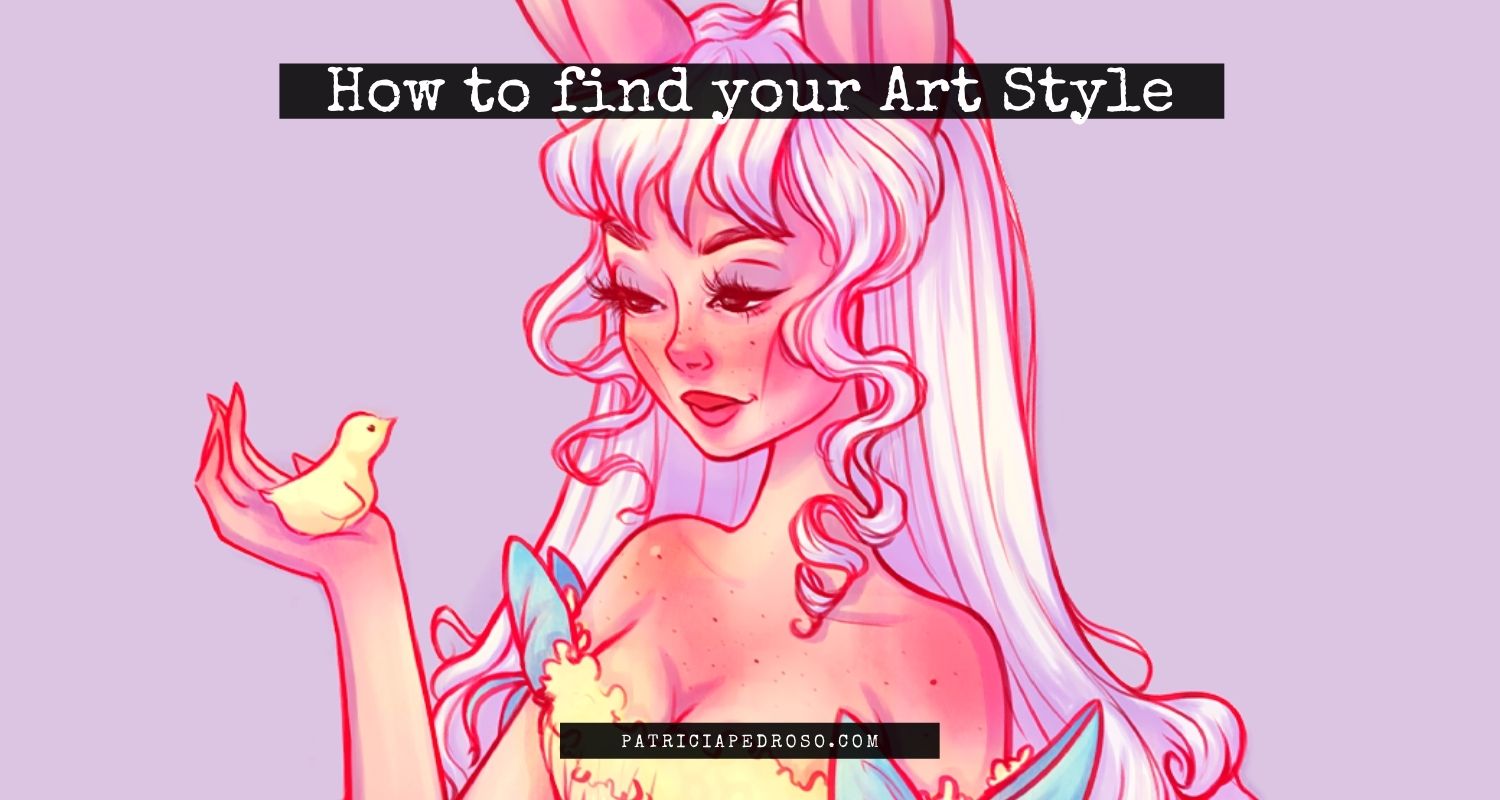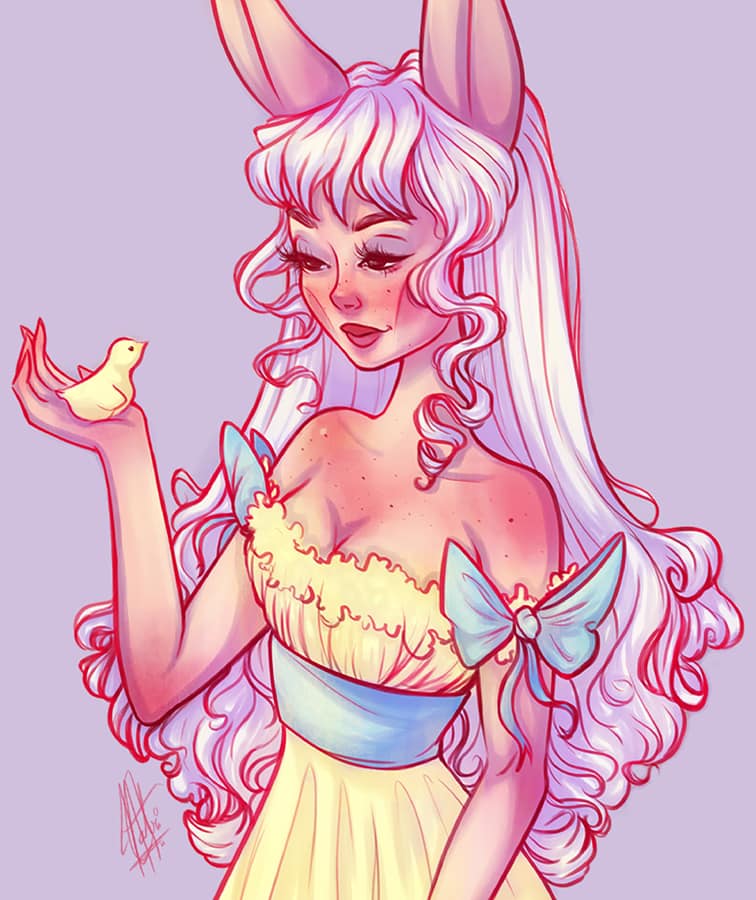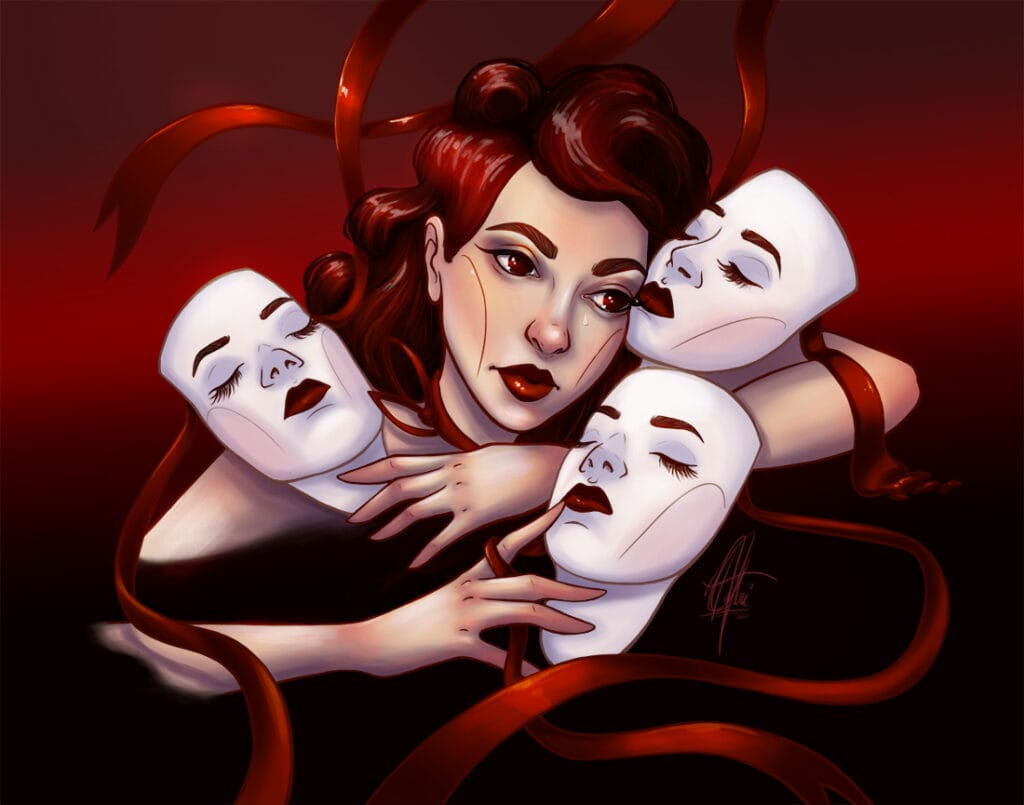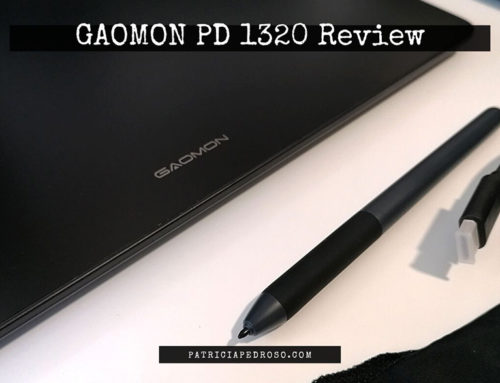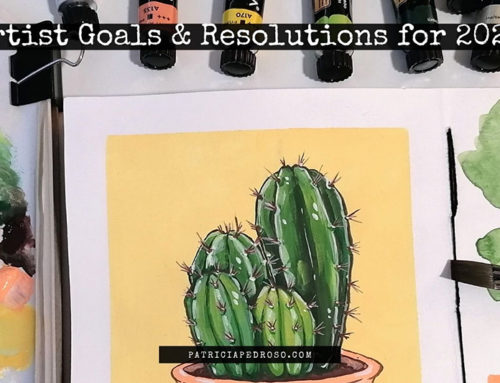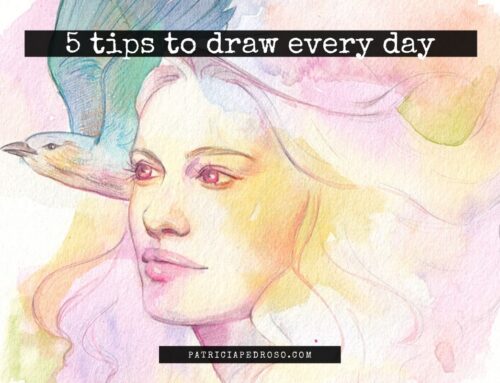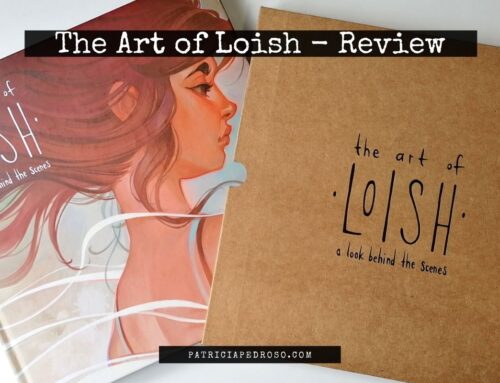This is the question we all have since the first time we start drawing: how do I find my own artistic style?
Back when I first started out I had this very same question. I still don’t know why, but having an art style seems to be what matters the most to a LOT of beginner artists, and boy, are we eager to find an answer to our question!
I’m sure there haven’t been many Q&A I’ve seen from professional artists that don’t include this question at least once. – And if it doesn’t it’s probably because they choose to ignore it…
Even after years of hearing the same answers, artists still seem to think there’s a magic way to have a signature art style and seasoned artists are hiding it from all of us, mere mortals.
Let me tell you, there’s not.
So yes, there’s gonna be a few things on this post that are the things you probably don’t want to hear, because you’re looking for that magic answer… (been there, done that)
However, if you stick with me for a while I’m sure I can give you some tips you just might haven’t heard before!
Yes, there are a few tricks that might help find your artistic style a bit faster. Still no magic tho…
No matter if you’re just starting out or if you’re more advanced in your career, I believe you can find here several tips that might help you. Let’s dive in!
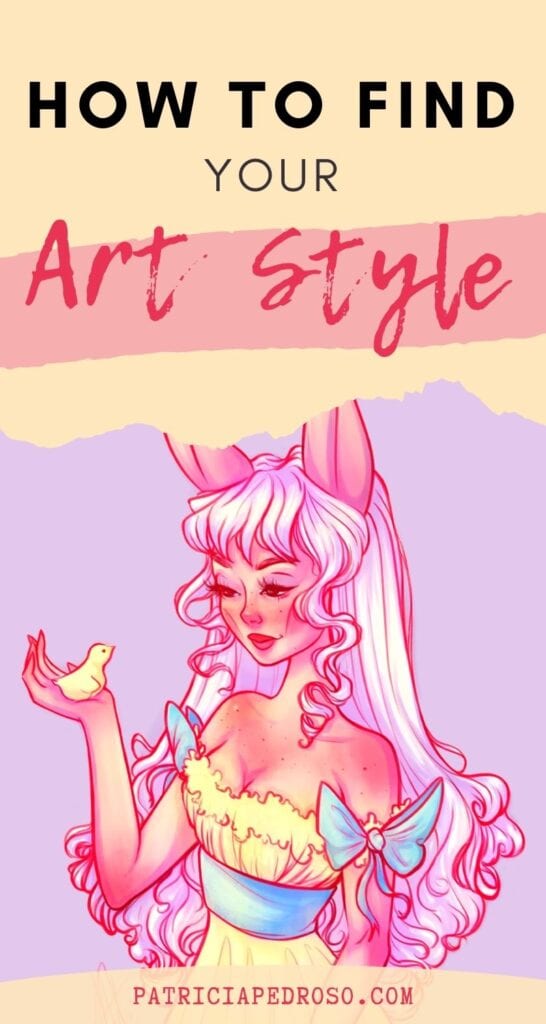
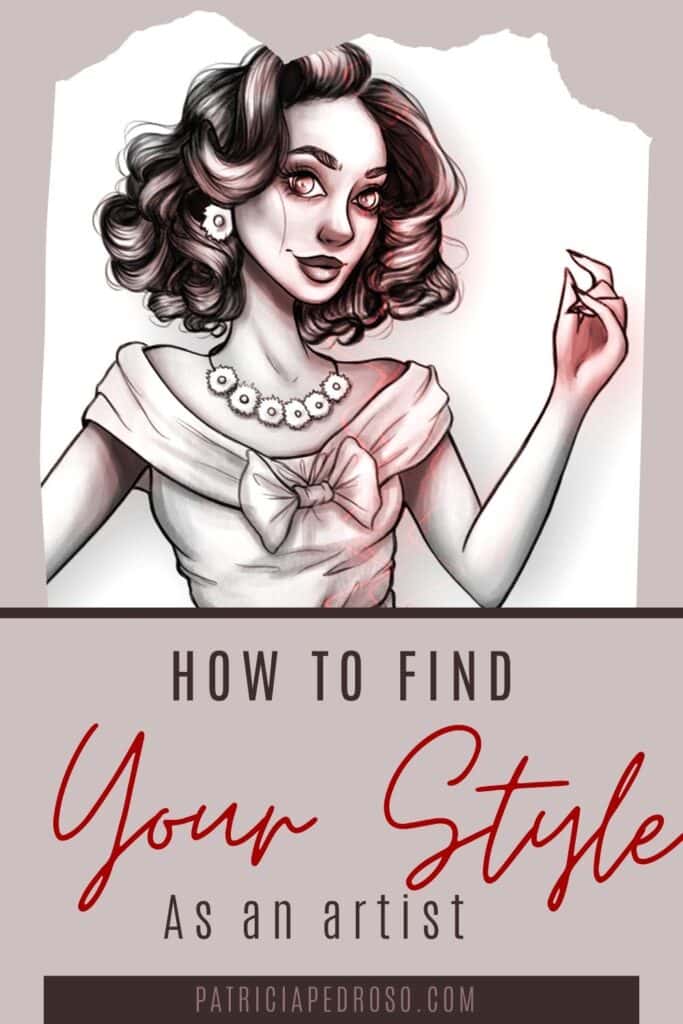
*Reminder that this post contains some affiliate links. This means I might get a small commission when you click and buy something with that link with no additional cost to you. However, my reviews and recommended products are not influenced by this, I’ll only recommend what I use and what I believe is good. Click here to read the disclaimer if you want more information*
What’s an “Art Style” and where does it come from?
Your art style is a reflection of yourself. If you don’t see it, just keep reading a bit further.
Over time, you’ll develop preferences for certain colours or colour palettes. You’ll prefer certain mediums to others, you’ll have your own specific techniques you like to use, you’ll stylise certain things in a certain way, there will be subjects you’ll prefer and so on…
But not only that, that’s just the “technical part” people can see.
Your very own signature style will also have much more of you: the things that make you, YOU!
This is where you’ll have to answer the question: where does my art style come from? Well, it comes from everything:
- The art you consume, and especially the art you look up to the most. This makes your artistic taste, so to speak.
- Your experiences in life & your emotional connections.
- Your everyday life.
- Other things you consume and hobbies, like books, movies, shows, knowledge, fashion, sports,…
- Your taste.
- And literally everything!
It’s very hard that artists coincide in all of these things, thus why there aren’t styles that look exactly the same. (Unless is a rip-off, that doesn’t count)
Secrets about style: a few harsh truths
Even though I’m gonna talk about tricks that help you find your artistic style & such, I still feel it’s important for most people to assimilate some things I’m gonna say here. Not just because I say it, but because it’s what I’ve heard every successful artist with a style say & advice.
Assimilating a few of these truths early on will only help in the process of finding your style. When I was first starting, it took me hearing it from several artists till I believed it.
After that, I just let it happen and stopped worrying so much about it. – and they were right!
First harsh truth: Style doesn’t just happen from one day to another. It needs time to develop, it will evolve with time and with you as an artist.
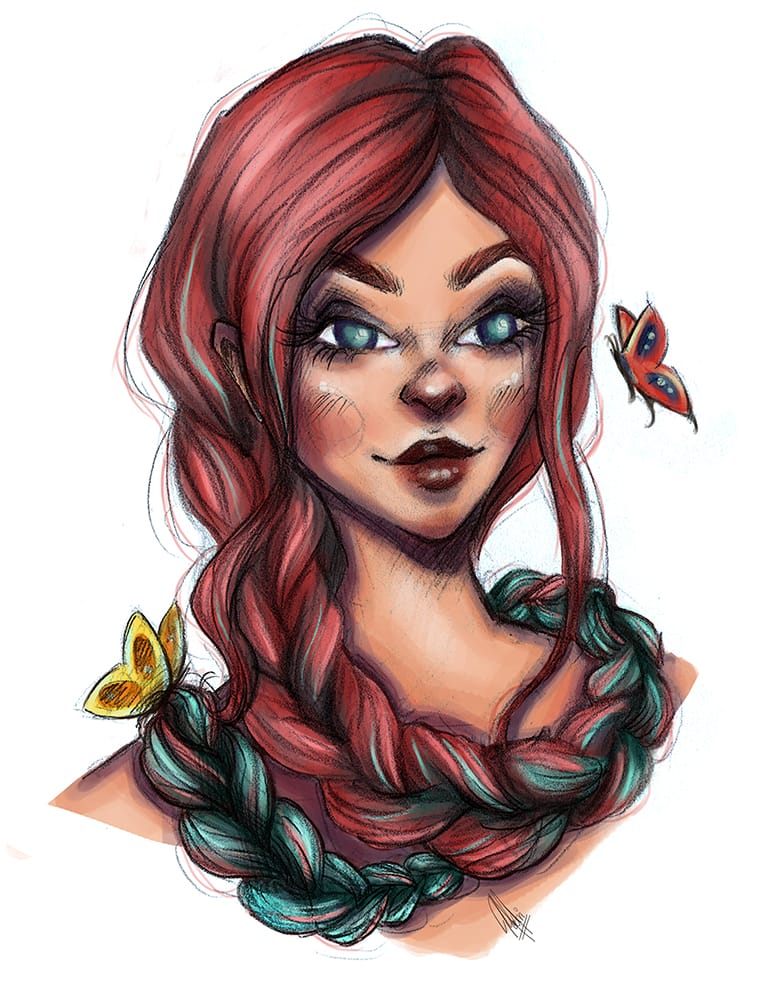
This is the overall secret – not-so-secret – about style. It happens over time.
Second: you’ll need to draw a lot to develop it. Like A LOT. It takes a lot of practice to develop your very own signature style.
Simply because it takes time to build enough skill, to develop your tastes, your quirks when drawing, to find your favourite subjects, etc.
Third: It’s quite uncommon for a style to be fully consistent. As you keep creating, exploring and growing, your style will evolve with you.
You probably won’t see it in your day-to-day, but eventually, if you compare your current artwork to work from a year(s) back, you’ll see it. The changes might be minor or major, depending on a lot of factors, but they will be there.
Just know that this isn’t a bad thing, it’s just the way building a skill works.
Why not having an art style can be beneficial
I thought this was an important point to touch on as well, so I’ll say a few things that are important to consider.
There are a few cases where having a very specific style might not be to your benefit.
Especially if you’re not willing to adapt.
The most common case it’s work-related. If what you want it’s a job on an animation or game studio (or anything of the sort), they’re not looking for you to have a style. They want adaptability because they might vary their styles depending on the project.
And you need to be able to follow.
Now, the same happens if you’re starting out looking for freelance jobs, in many of them, if you’re not so well-known, people will want you to emulate styles or follow a specific style they have in mind. I’m not saying you have to do it, but sometimes it’s good to follow along (especially if you need the experience and/or the money).
Later, when you have a proper portfolio with a personal style & experience (and especially if you have some presence online) maybe people will start contacting you because they want your style in their projects, but for many people, it doesn’t start that way.
And you might still have some jobs that could ask you to adapt a bit. Many professional artists vary their styles for projects, but all you see in social media is personal work, so you wouldn’t know.
I thought it might be important to share this just for the sake of getting all the perspectives.
About not rushing your style
I wanted to talk about the philosophy of not rushing your personal art style a bit before we dive in because I agree 100%.
This is not to say you can’t follow along with the exercises & tips I’m gonna give you to help figure out some stuff, cause I don’t think they exclude one another. (And they might accelerate the process)
I believe that, if you aren’t always worried about your style, the process will be much more satisfying.
For example, I stopped worrying about my style after a couple of years of starting out (only really started worrying about it about 1 year in or so). And you know what? I had a lot of fun experimenting and evolving.
One day, someone told me “I love your style”.
I was surprised & excited. So, I looked back at my work and at my current work, and I could see it, I was starting to develop my own thing!
But I also want to say that if you’re an artist that likes to experiment with different mediums, subjects, colour palettes & such, it’s pretty normal to see a change of styles between your own work. Don’t let that stop you from experimenting, don’t force it!
Using my own example again, I can see my style is more consistent when I work on digital (high lineart focus, I love it, what can I do…). However, switch me up to gouache and you won’t say the work is mine!
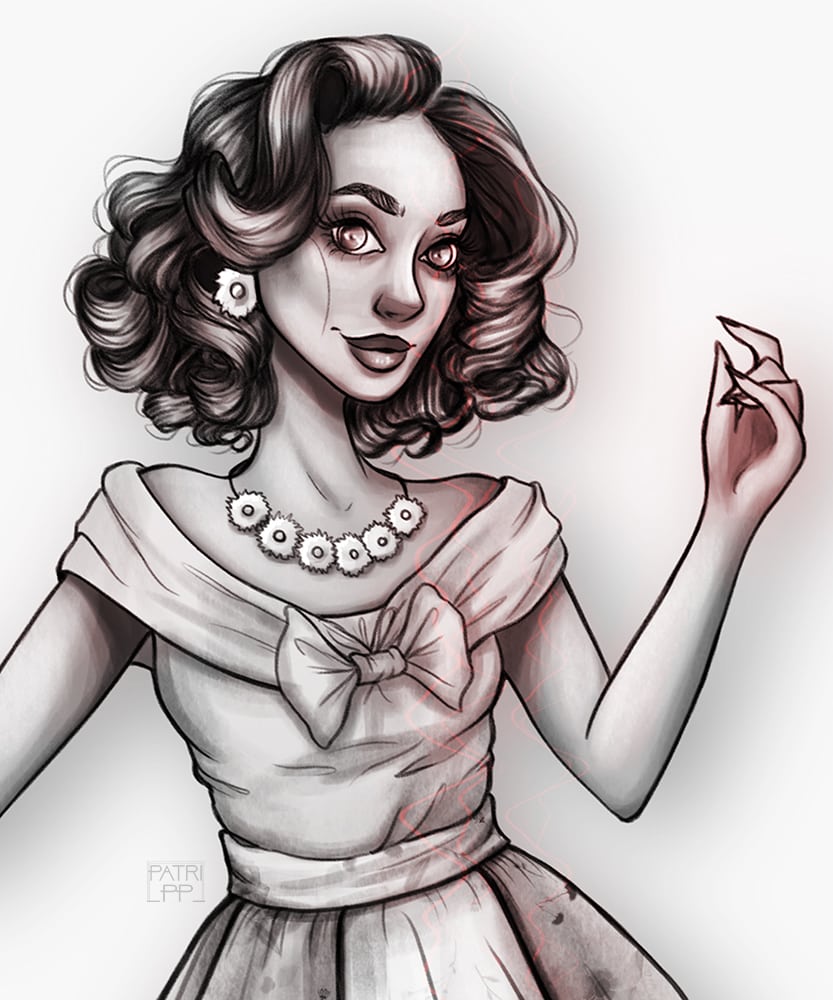
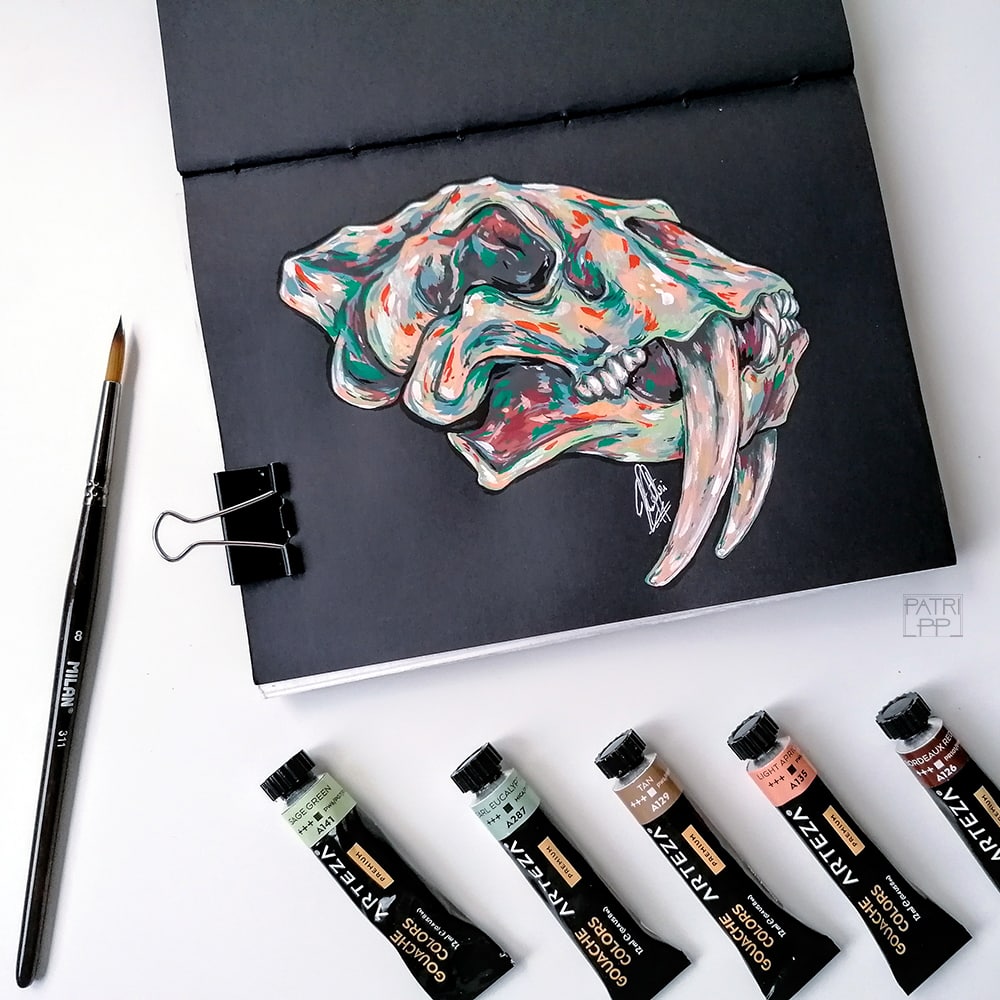
So I just want to leave this out here to say that it’s alright that your style isn’t consistent 100% of the time, it shouldn’t stop you from experimenting!
A few Warnings before we move on:
This will be quick (and in bullet points) so here we go:
- I firmly believe you can’t have a “consistent” style if you lack basic drawing skills. This is not meant to be harsh, just something I’ve observed.
- Also doesn’t mean you have to master all the fundamentals & have been drawing for 15 years, but it does need some practice and some basic skills.
- If you lack the practice, you’ll start excusing basic mistakes as a “stylistic choice”, you’ll think people won’t notice, but they will.
(I talk a bit more about things like this in this post: 23 Top beginner artist fails that keep you from improving)
So, basically, this doesn’t mean you have to be an experienced professional to have an art style. Or that you have to wait till then to start looking for your style.
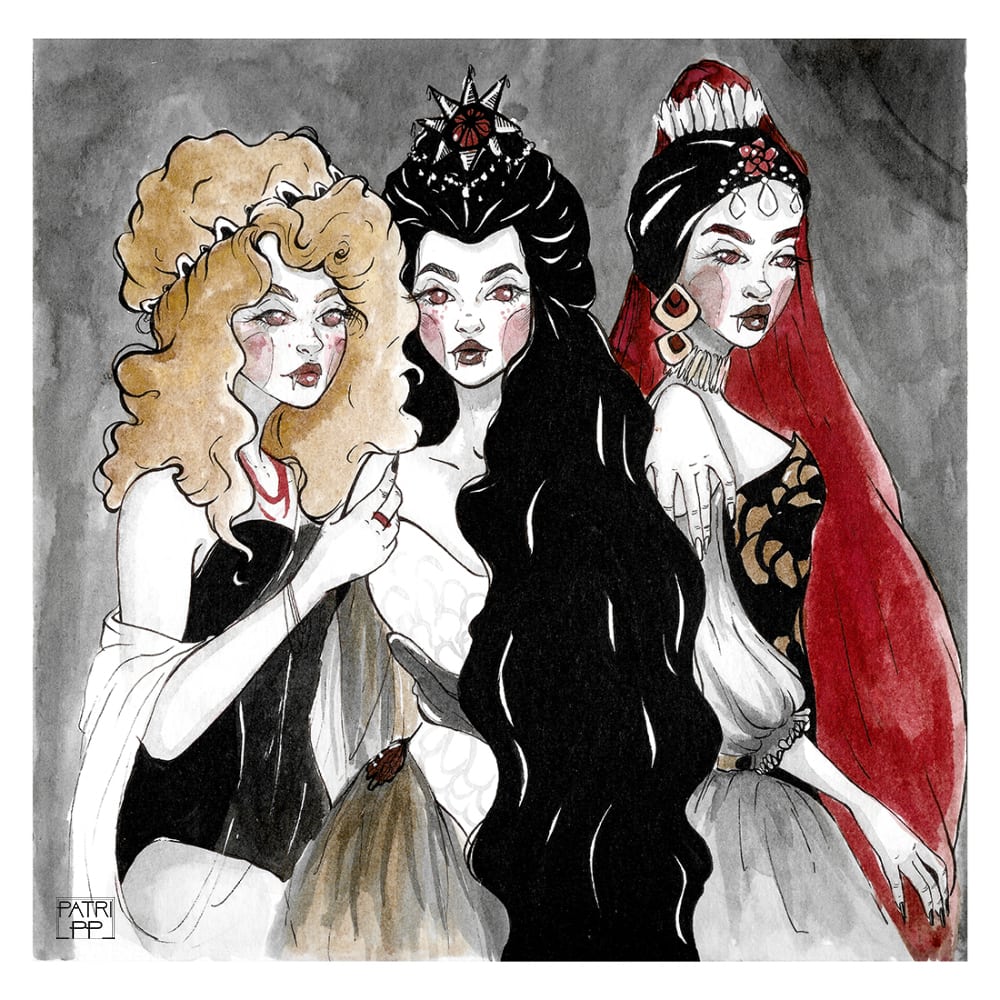
Just that it’s more important to focus on learning at the beginning (and always, really) before you even worry about a style.
If you’re interested in ways to learn more about art, I have a few posts that might help:
- Schoolism review – is the subscription worth it?
- Youtubers & Podcasts for art advice.
- The Ultimate Guide to learning watercolours
- Or, have a free 2-week trial at Skillshare, an online learning platform with thousands of classes about art, illustration, drawing & more!
Methods to find your own Art Style:
Alright, next up I’m gonna talk about several methods & techniques that can help you find your art style faster. (Considering all that I said so far)
Some will be more specific, others, well, different. But I believe knowing about them & applying them can only benefit you.
These all follow the same basic premise that’s just the natural way to develop a style.
Basically, they’re based on something like this:
Finding the things you like/want to draw + the things you like on other people’s art + some time & practice = your style.
1 – The long term/ultimate way of developing your art style
The road to finding your art style is not fast or easy. It’s a constant search, so you need to keep at it and avoid getting discouraged.
Things that will help you get there:
- Copy the artists you like: Study their work & their techniques. Identify exactly what attracts you about their work and what you apply to your work.
- Practice, practice, practice. The more you draw the better you get. But also, the more you know what you like to do and don’t.
- Learn. Study the fundamentals, take a course every once in a while, read a book, study from other artists.
- Experiment and have fun. Break the rules, get out of your comfort zone, try a new medium or technique.
- Ask a lot of questions about your work. Dive deep: are there elements that tie your pieces together? What themes are usually present in your work? What elements? Are there certain colours you’re drawn to? What kinds of art do you enjoy creating at the moment?
Eventually, as you develop yourself and your skills, your artwork will become more personal. You’ll develop your own artistic voice.
The more you create, the closer you are to your art style.
2 – Make a Collection of work
I put this one first because it’s more of a temporary solution. You could do it long term, but you’ll probably get tired of it.
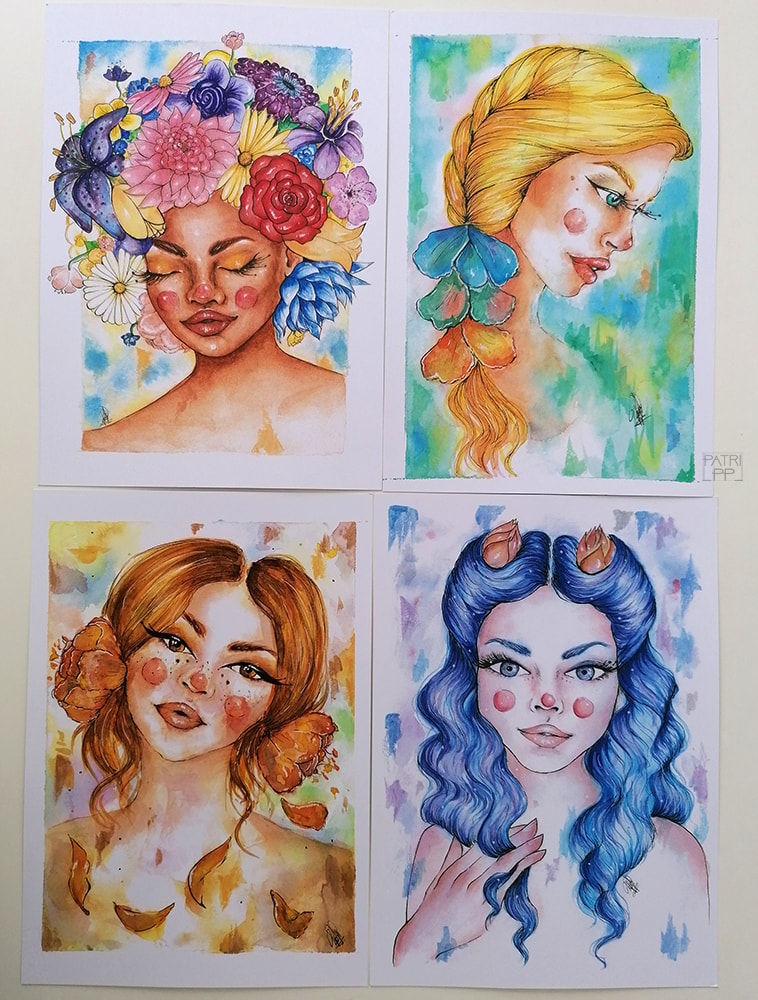
This method can be useful if you’re looking to create a cohesive portfolio or body of work to show with a cohesive look. Now, this one can be done basically at any skill level and it’s what some artists do when they have to create work for a gallery exhibition, for example.
Basically, you pick a number of pieces, a good rule of thumb could be around 10 because that’s a good number for a portfolio. And then add a theme and some restrictions.
Ideally, you would probably want to stick with the same medium.
The more limitations you add, the easier it would be for you to keep the art similar. And do them in a limited period of time, because, if it takes you 3 years to finish this collection the last ones will probably look nothing like the first.
Some more ideas for limitations you could add:
- Theme: it could be really open or maybe more narrow. Example: Animals can be good if you have a ton of other limitations, birds can be better if you have less.
- Same or similar sizes/proportion of the pieces.
- Limited or pre-decided colour palette.
- Similar techniques and/or same creation process.
3 – Will Terry’s Method
Children’s book illustrator Will Terry describes in his book “What they don’t teach in art school“ the next method to find your art style.
This is the main method to develop your artistic style I’ve seen around (with slight variations) that most artists agree with. Let’s go:
- Identify 3-5 professionals whose work you love.
- Make a list of specific attributes of these artists that makes their work appealing to you. The more specific, the better!
- Once you have that, you’ll start making an amalgam of their work. Take a few things from each and mix to make your own version, follow your list. The viewers might – and probably will – be able to see who’s influencing your work, but they shouldn’t feel like it’s a rip-off.
- It won’t happen the first time you do this. You’ll need to work on this for some time – maybe even years – to get to a style you can call your own.
You’ll naturally evolve, develop your own techniques and your own way of working.
It will happen gradually, you won’t even notice! Eventually, you’ll forget about your list and it will be YOUR STYLE.
Will affirms it often takes between 5-10 years to get there. He’s been a teacher for many years and has a lot of experience, so I believe him there. Thus why I said you need to be patient.
4 – Djamila Knoff’s Influence Map
This isn’t exactly a way to discover your style perse, but more of a way to learn more about your tastes & yourself.
So why am I adding this?
Well, I feel that discovering more about yourself could help greatly on the way to discover your style. So if this sounds interesting, keep reading!
Djamila talks about this in her Schoolism course. A lot of yourself will reflect on your art, even unconsciously, identifying your taste and what leaves an impression on you can be much more helpful than what you think.
She talks about an “Influence map”, as a group of inspiration references that reflect what kind of art you want to create from your tastes. I hadn’t heard about it before, but apparently, it has been around for a bit.
So how do you do it?
- Grab images that influence you. Think about different aspects of your life, not just art. (Movies, books, nature, exercise, whatever it is…)
- Reduce to somewhere between 8-15: pick the ones that represent you the most or that combine other inspirations. Enough to have some variety but still limited.
- Analyse: What do you see? What does it say? Is there any takeaways you can take from it? Write it down, anything you notice and see if it resonates with you.
Not all of these have to be included in your artwork but some of them might resonate with you. You might even find things you want to explore in your art but never thought about!
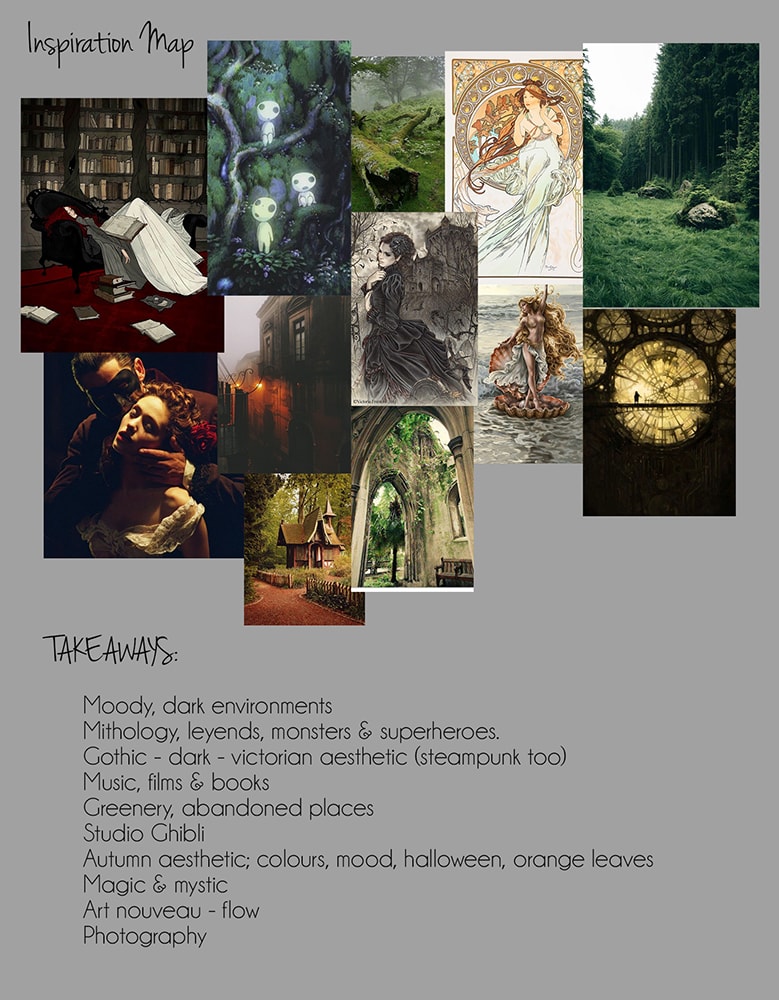
For example, here’s mine. Back when I did it, it helped me to realise what I wanted to achieve with my art: illustrations with a hint of fantasy and darkness. I never was able to put it this clear before doing this!
5 – Danica Sills’ Lists
Here’s a video I saw recently by Danica Sills, about style and subject matter.
I found it very original and sounded useful, so I wanted to include it. Maybe especially if you already are at the start of finding your art style.
If you don’t want to go watch the video now, here’s a quick outline:
- Look at your work & the pieces you’re most proud of. Get specific about what you like & why you like it.
- Look at other art you like and do the same.
- In any of them, if there’s a concept that only appears once or twice, maybe that’s not what you’re looking for.
- Make a big rough list with all of it.
- Narrow it down: if you have similar concepts try to fit them all together or find a word that encompasses them more or better. Or maybe it’s more concise. (See the video for Danica’s examples) Take off the things that aren’t that relevant.
- You’ll end up with a list of 5 things that you want in your work.
The cool thing about this list is that it can change over time, you can switch concepts as you and your artwork evolve.
You can use this list as inspiration for your work, to keep your body of work concise. For example, Danica says she makes sure a concept or sketch checks out at least 2 items of the list before continuing with it.
How do I know if I’ve found my art style?
- You’ll see people will start noticing. It’s common for people to see it before you do.
- You’ll get comments like “I love your style” or “I love so and so about your style”.
- For example, I also had people telling me they would easily distinguish my work – that’s the best sign – Ask around!
- Compare your current work to older work.
- Do redraws of older pieces – this helped me see it a lot! – I talk here about why I think redraws are important for artists.
- In my case, doing DTIYS challenges also helped me see I was starting to develop a style.
- If you’re really successful, you’ll even find that people start imitating your style!
A few last words…
You’ll see that a lot of these are basically doing some “soul-searching”. Because at the end of the day, your style reflects you. Your tastes, the art you look up to, the colours that you like, your life experiences, and so on.
And this takes time to develop because you need enough skill to be able to learn to reflect on your art what you want to. And to learn what it is you want to reflect.
This can change and evolve, it’s alright!
Doing some of these things will definitely help on the path to your style, but you’ll have to work for some time to get there.
Anyway, I hope there were some tips here that helped you! I definitely think I’ve included more things than I’ve ever seen in a single post about “art style”, so hopefully, you’ll find something for you.
I’m always happy to hear your feedback or any other thing you might feel like mentioning down below!

